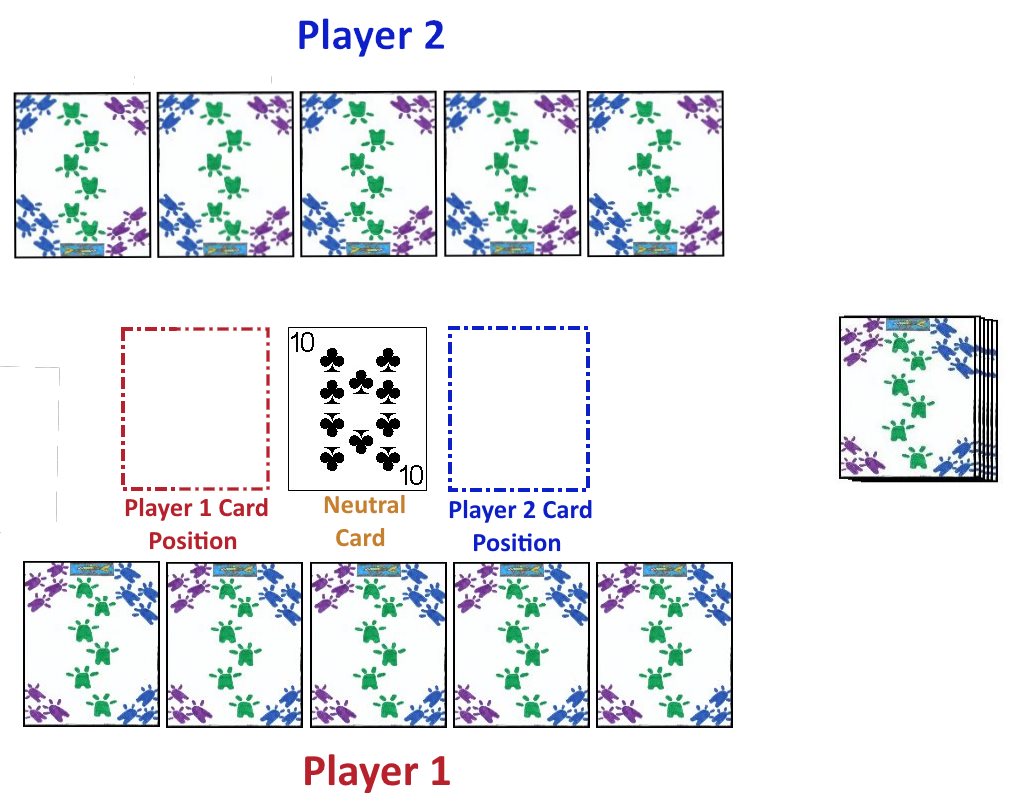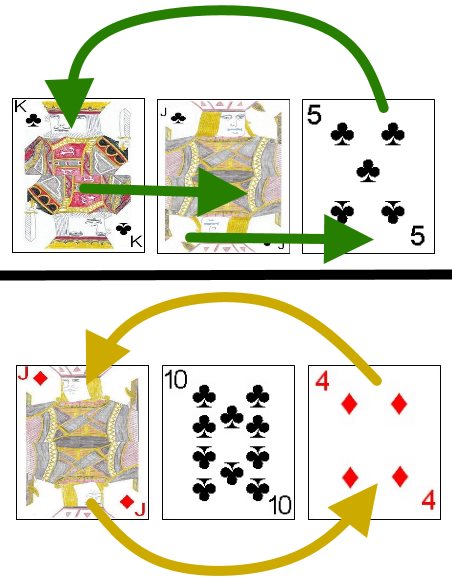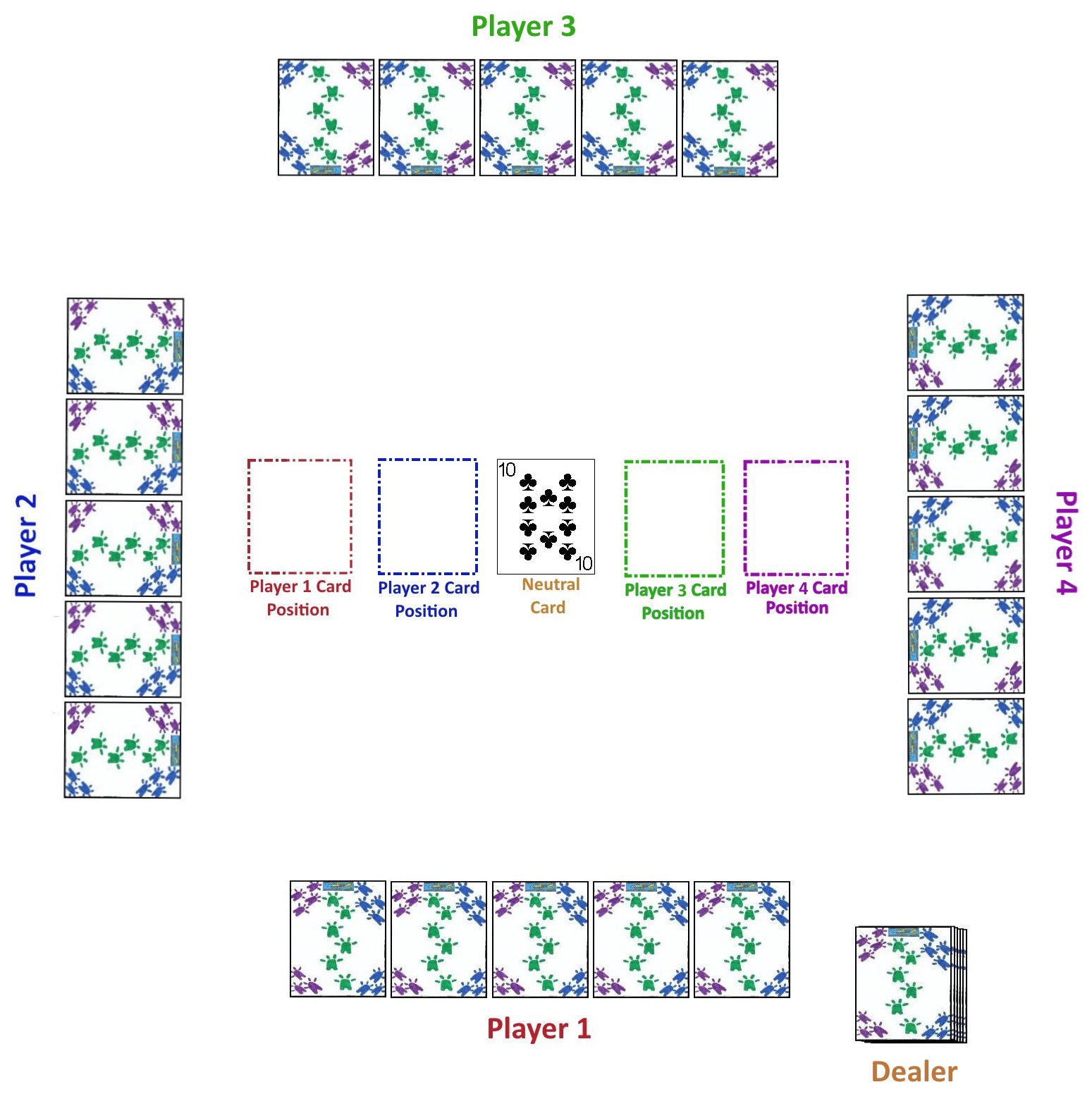 Crossfire is a fast moving, easy, two player card game. The main goal of this game is for each player to attempt to win as many rounds as possible to earn the most points by the end of the game.
Crossfire is a fast moving, easy, two player card game. The main goal of this game is for each player to attempt to win as many rounds as possible to earn the most points by the end of the game.
Crossfire uses one standard 52 card deck. Since this is largely a game of comparisons, each card in the deck has a specific relative rank to the other cards in the deck. Thus, the ranking of the cards in the deck as used for playing Crossfire are as follows (from highest to lowest); Ace, King, Queen, Jack, 10, 9, 8, 7, 6, 5, 4, 3, 2.
Determination of the first dealer can be done using a vareity of methods. This most common method in which this is done is for both players to draw a card from the shuffled, face-down deck. The player drawing the higher of the two cards drawn thus becomes the first dealer. If both players draw a card of the same rank, both players discard this card and draw another card. continuing to do so, until there is a clear higher card drawn by one of the players. After each hand, the role of the dealer alternates amongst the two players.
Once the first dealer had been determined, this player should thoroughly shuffle the deck and offer it to his opponent to cut. The dealer completes the cut and then begins dealing. He begins by dealing five cards, face-down and in a horizontal row to each player. He does this by alternating one card at a time to each player, starting with his opponent. The players may not look at these cards. After each player has his five face-down cards, he then places the deck near the middle of the table, off to one side. He then takes the top card from the deck and places it face-up in the middle of the table, between the two players. This middle card is called the neutral card.
Once this middle card is placed in the center of the table, each player then selects one of his five face down cards, without looking at his card, and places it to one side of the neutral card, still face-down. Each player places it on the left side (from his own perspective) of the neutral card, which is his considered his "position" on the layout. After both players have placed his card in this location, each player turns over his own card, exposing the face. The object of the game is to have, in his own position, the highest card on the table. However, before the cards are compared, there are several conditions that can cause the locations of these cards to move, as follows:

- If, after the two cards are exposed, exactly two cards in this three card layout are of the same suit, these two cards exchange places.
- If all three cards are of the exact same suit, all the cards, from the dealer's perspective slide one space to the right. However, since the card that is already in the farthest right position (the card originally played by the dealer's opponent), is already as far right as it can go, it simply moves to the farthest left position of the three cards in this layout.
- If the card in the middle position is higher than the cards on either side, no one wins the round and no points are scored for that round.
- If one or both cards to either side of the middle position card are of higher rank than this middle card, the highest card is considered the winner. Thus, the player in whose position this high card is found scores one point for the round. If both player's cards are of the same rank, neither player scores for that round.
After each round, the three cards are discarded to the side, out of play. The dealer then starts the next round by taking the next card from the top of the stock and places it in the middle of the table as the new neutral card. The game continues in thiw say, until both players have played the last of his five cards in fromt of himself. After this the dealer then deals each player another round of five face-down cards. Once 25 rounds have been played, there will be two cards remaining in the deck. These two cards are discarded and the players compare their scores for the game. The player whom earned the most points during the game is declared the game winner.
